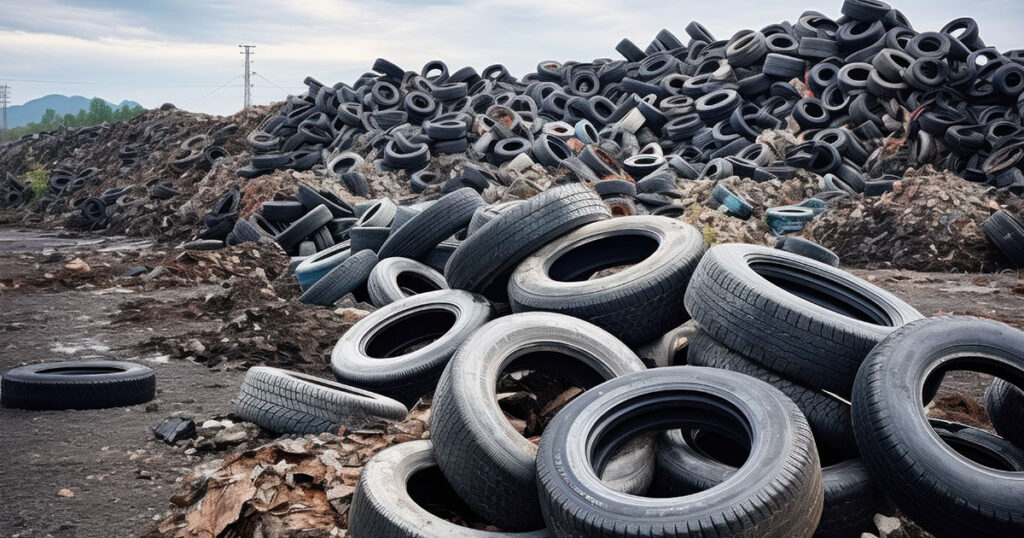Although research suggests tire recycling efforts have improved over the last two decades, millions of used tires have still found their way to landfills and other unsafe, inefficient dumping grounds.
A discarded tire may not seem to pose a major threat. But in reality, tires are one of the most problematic forms of solid waste that host a myriad of issues when improperly disposed.
Whether you are a retailer, fleet operator, or even a conscious consumer, here are five compelling reasons tires should never be reduced to landfills, and how Traxion is offering an alternative.
- Tires Take Up Significant Storage Space
Unlike organic waste, tires do not compress easily. Their curved, often large design causes them to trap air and resist compaction, taking up immense landfill volume, typically for decades.
Over time, tires contribute substantially to landfill overcrowding, resulting in increased waste management costs for municipalities and local governments.
- Tires Pose Severe Fire Hazards
Tire stockpiles pose a significant fire risk in waste management. Once ignited, tire fires are extremely difficult to extinguish. In some cases, tire fires can burn for days or event weeks.
In 1983, the Rhinehart tire fire in Mountain Falls, Virginia consumed over seven million tires in an 80-foot-high stockpile – all in too poor condition for resale – across five acres.
The Rhinehart tire fire burned for nine months.
In the process of burning, tire fires emit toxins into the atmosphere, which may include benzene, butadiene, and styrene. Much like the Rhinehart fire, these disasters contaminate our air, soil, and groundwater, and the cleanup costs are remarkable.
- Tires Are Breeding Grounds for Mosquitoes
Due to their unique shape, and particularly when dumped or stored outdoors, tires collect rainwater with ease, creating the perfect breeding environment for mosquito larvae. These stagnant pools of water turn scrap tires into vessels: not only for pesky insects, but for the diseases they carry.
Unbeknownst to most, this is one of the major public health hazards of used tires, particularly in warm or humid climates, with global implications.
- Tires Take Decades – Even Centuries – to Decompose
Unlike biodegradable materials, tires are made of compounds uniquely designed to withstand harsh weather and treacherous road conditions. This engineered durability makes them resistant to decomposition.
On average, a single used tire takes around 50-80 years to decompose in a landfill. Meanwhile, buried tires can remain intact for hundreds of years, all while tire chemicals contaminate the surrounding environment.
- Tires Serve a Better Purpose – Beyond the Landfill
Used tires possess rubber, steel, and synthetic fibers, all of which can be recycled and repurposed. When landfilled, these valuable materials are lost. When properly recycled, these materials can become fuel, playground surfaces, road and construction materials, and more.
Instead of taking up space and posing the risks mentioned above, used tires can be reconditioned into economic assets that support existing and emerging industries. Used tires are valuable and still have a long life to live once they’ve retired from the roadways.
At Traxion, we are leading this charge.
Learn more about how you can partner with us for smarter tire solutions at www.traxionmaterials.com
